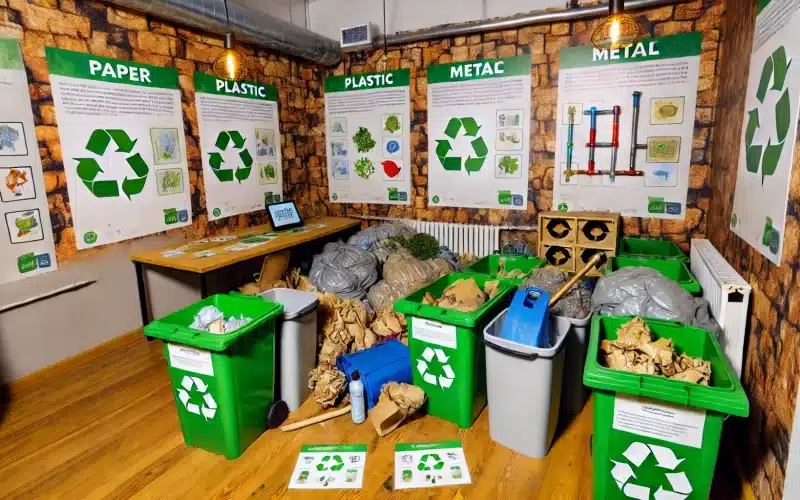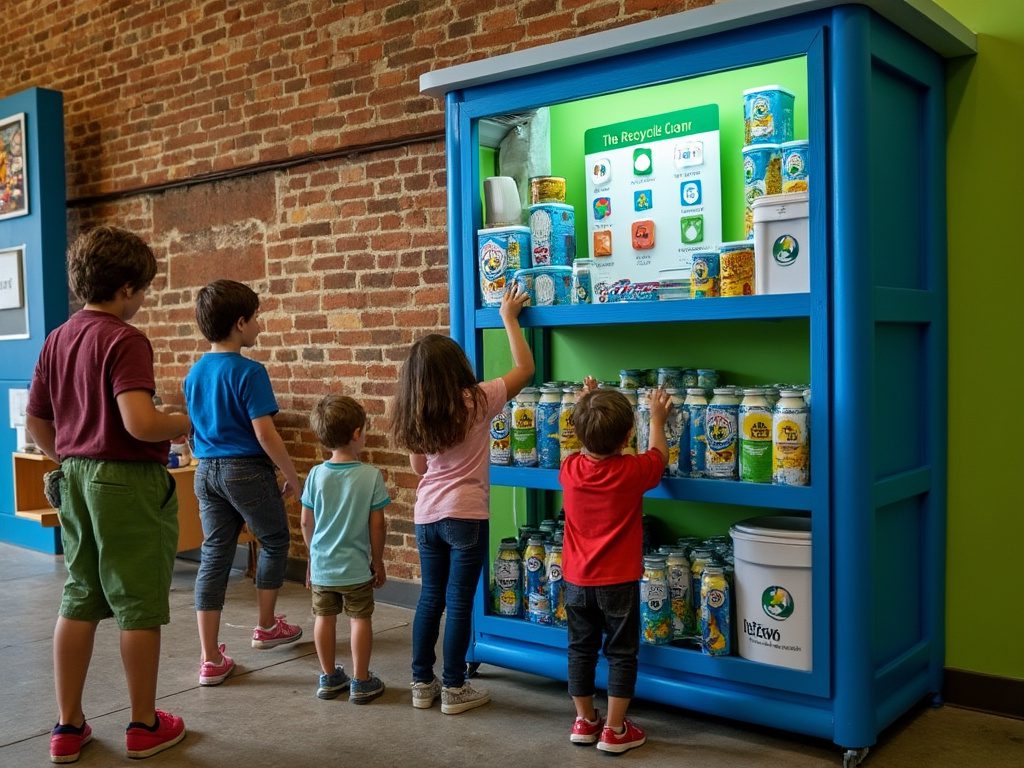
Ever wondered how you can make your lessons as a teacher more interactive? Then the concept of a Recycling Escape Room is something for you! It combines hands-on engagement with environmental education, creating a memorable experience that teaches students essential recycling principles in an immersive setting.
Designed for schools, community programs, and sustainability initiatives, the Recycling Escape Room encourages participants to solve puzzles, complete tasks, and work as a team to “escape” by completing recycling-themed challenges.
This educational approach is gaining traction as an innovative way to communicate critical concepts about waste management, resource conservation, and environmental impact.
What is a Recycling Escape Room?
A Recycling Escape Room is a structured learning experience in which students are placed in a simulated room or area divided into various “stations.” Each station has a theme and activities designed to explore different recycling practices, such as proper sorting, identifying contaminants, and understanding recycling‘s impact on reducing landfill waste. This setup fosters problem-solving, collaboration, and active participation, often resulting in a stronger grasp of the concepts being taught compared to traditional classroom lectures.
Example Stations in a Recycling Escape Room:
- Sorting Station: Students categorize items into the appropriate bins for paper, plastic, and metal. Proper sorting reduces contamination, helping students understand the importance of separating materials correctly.
- Contamination Check: At this station, students identify which items do not belong in recycling bins, such as greasy pizza boxes or broken glass, emphasizing how contaminants can compromise the recycling process.
- Landfill Lockdown: Here, students estimate or weigh items to determine the landfill space saved by recycling them, providing a visual understanding of waste reduction.
- Upcycling Station: In this area, students repurpose discarded items into useful objects, introducing them to the concept of upcycling as a creative form of waste management.
Each station can feature puzzles or lockbox challenges requiring students to answer recycling questions or solve environmental riddles. For example, one clue could be unlocked by correctly sorting items, while another might require decoding a fact about recycling statistics. The process is similar to traditional escape rooms, with teams working together to “unlock” the next phase.
Benefits of a Recycling Escape Room
- Interactive Learning: Students gain practical, hands-on experience with recycling tasks, moving beyond theory to actively apply their knowledge.
- Enhanced Retention: The immersive nature of escape rooms helps students remember key concepts about recycling and waste reduction. According to research on interactive learning, such experiences often result in higher retention rates than traditional lectures.
- Collaboration and Problem-Solving: Working in teams, students develop communication and critical-thinking skills, essential for understanding complex topics like environmental sustainability.
- Positive Associations with Sustainability: Creating a game-like environment fosters positive attitudes toward recycling, helping students associate fun with environmental responsibility. This approach counters the often daunting and “doom and gloom” framing of environmental topics.
Implementation and Adaptability

Recycling Escape Rooms can be adapted for different age groups, space limitations, and educational goals. While schools can set up physical rooms with props and stations, a digital escape room variant may serve remote learning environments or larger groups. Digital escape rooms use interactive online tools to guide students through tasks, making the experience accessible to a broader audience.
For example, some digital setups utilize 360-degree views to simulate the classroom environment, requiring students to navigate between virtual stations and decode clues.
Key Considerations for Setting Up a Recycling Escape Room
- Define Clear Learning Objectives: Establish what students should learn about recycling and environmental stewardship. Tailor activities to reinforce specific takeaways, such as contamination’s impact or the energy saved by recycling.
- Incorporate Varied Activities: Mix hands-on sorting tasks with mental puzzles to cater to different learning styles and maintain engagement.
- Create Realistic Time Constraints: To add excitement and urgency, set a time limit for each task. This mimics real-world constraints in waste management and encourages efficiency.
- Encourage Reflection: Conclude with a discussion, prompting students to share what they learned and brainstorm ways they can implement recycling practices in their daily lives.
Complementary Activities Next To A Recycling Escape Room
Teachers can build on the Recycling Escape Room concept with several complementary activities that deepen students’ understanding of sustainability and recycling. Here are a few ideas:
1. Extended Project-Based Learning (PBL) Unit
Incorporate the escape room into a larger PBL unit, where students research recycling practices in their community, create presentations, and develop action plans to address local recycling issues. They could even design a campaign to raise awareness about contamination in recycling or the importance of sorting correctly.
2. Interactive Eco-Design Challenges
After the escape room, challenge students to design their own upcycled products from common classroom recyclables, like plastic bottles or cardboard boxes. This fosters creativity while reinforcing lessons on resourcefulness and sustainability.
3. Field Trip Follow-Up
Organize a visit to a local recycling center, compost facility, or landfill to give students an in-depth look at how recycling works and why proper sorting matters. This firsthand experience can bridge the gap between classroom activities and real-world recycling processes.
4. Science and Social Studies Integration
Incorporate science lessons on materials and waste decomposition rates, or explore global recycling practices to see how other cultures manage waste. Discuss how different countries handle recycling challenges, creating a cross-curricular connection with social studies.
5. Data-Driven Reflection and Reporting
Turn students into environmental detectives by having them track waste and recycling at school for a week. Students could analyze the data to see what’s being recycled, reused, or thrown away and then use their findings to improve recycling efforts within the school.
6. Digital Learning Tools and Virtual Escape Rooms
For remote learning, teachers could adapt the escape room into a digital format using platforms like Google Sites or Thinglink. This can extend the reach of the project and make it accessible to students learning from home or in hybrid environments.
These extensions build on the escape room’s experiential learning model, reinforcing recycling principles and encouraging students to take real-world actions to protect the environment. This approach fosters long-term engagement, creativity, and a sense of responsibility toward environmental sustainability.
Educational Escape Rooms
The Recycling Escape Room concept aligns well with modern educational trends that emphasize sustainability. Schools, eco-conscious organizations, and even companies focused on corporate social responsibility can use these escape rooms to foster a deeper understanding of environmental topics.
This valuable tool in the educational landscape presents recycling not as a chore but as an exciting, achievable goal that students can actively pursue. It encourages them to take on environmental stewardship with enthusiasm.
